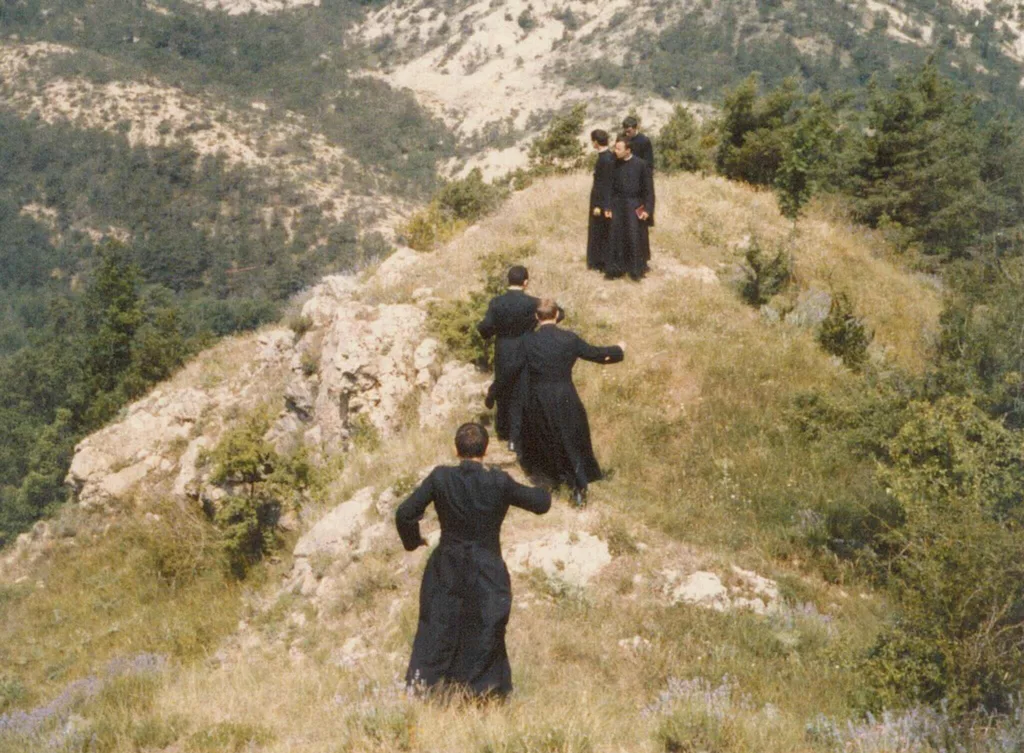
Driven by young students who felt the call to priesthood, Father Jean-François Guérin, a priest from the Diocese of Tours on mission in Paris, set out to found a community to ensure their formation for the priesthood.
It was under the paternal guidance of Cardinal Giuseppe Siri, Archbishop of Genoa, that he was welcomed to Italy. With those who were now the first seminarians of the Community, he settled in the Capuchin monastery of Voltri, in the diocese of Genoa.
In 1979, the fledgling foundation was recognised as a Pious Union of Diocesan Law by the Archbishop of Genoa. With the new Code of Canon Law of 1983, it became a Public Clerical Association. Don Jean-Marie Le Gall and Don Gilles Debay were the first priests ordained for the Community in 1980.
As the Community gradually grew in Italy, the first members were sent to continue their studies in Rome or Fribourg in order to receive a thorough formation. More and more French bishops began to show their confidence in the Community, entrusting it with its first parish ministries, particularly in the dioceses of Fréjus-Toulon and Blois.

The Community’s Mother House and House of Formation were therefore established in Candé-sur-Beuvron, in the diocese of Blois, under the protection of its successive bishops, Bishop Jean Cuminal, then Bishop Maurice de Germiny from 1997 onwards.
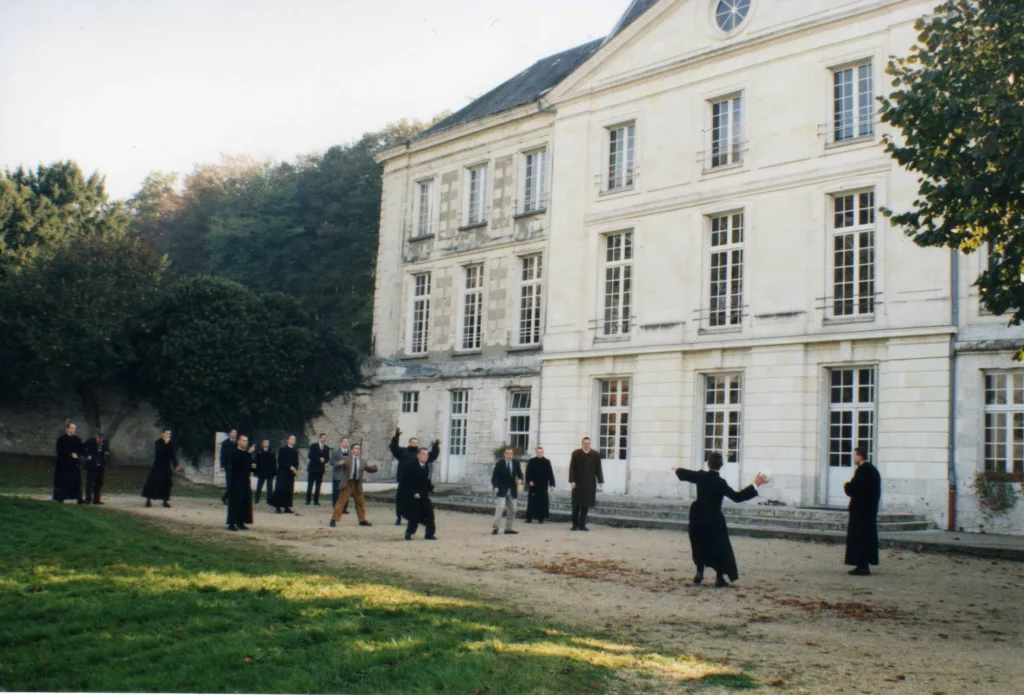
The Community of Saint Martin became a public association under pontifical law, directly dependent on the Holy See.
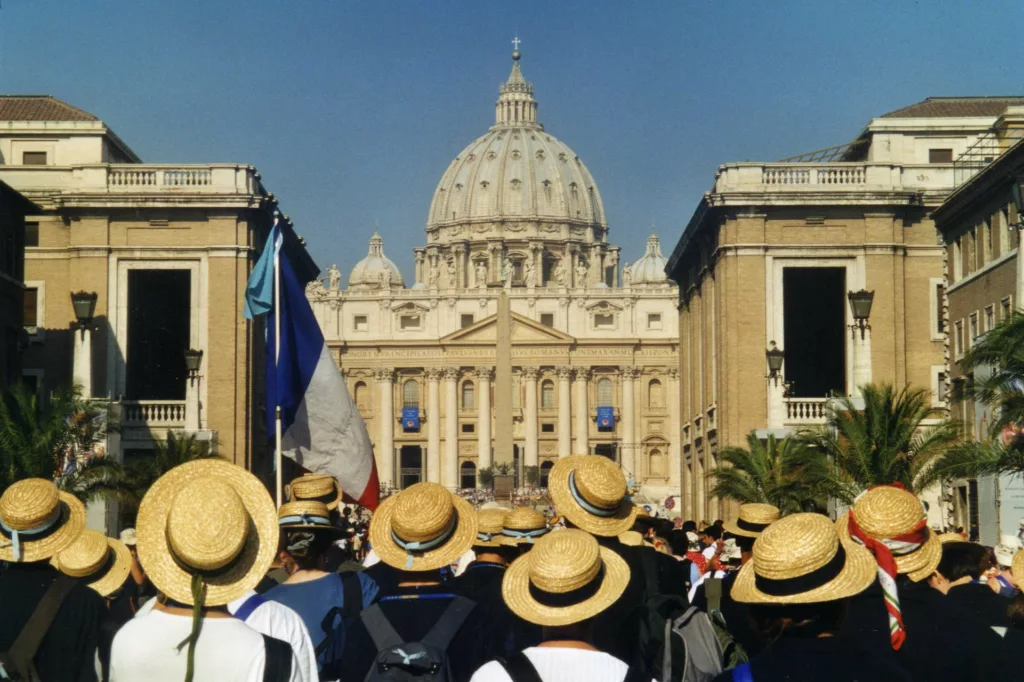
Abbot Guérin resigned from his position as Moderator General. To succeed him, the General Assembly of priests and deacons of the Community elected Don Jean-Marie Le Gall, one of the first priests of the community, for a six-year term. During Don Jean-Marie’s term, the Moderator General was granted the faculties of Ordinary, thus having the power to incardinate members within the Community.
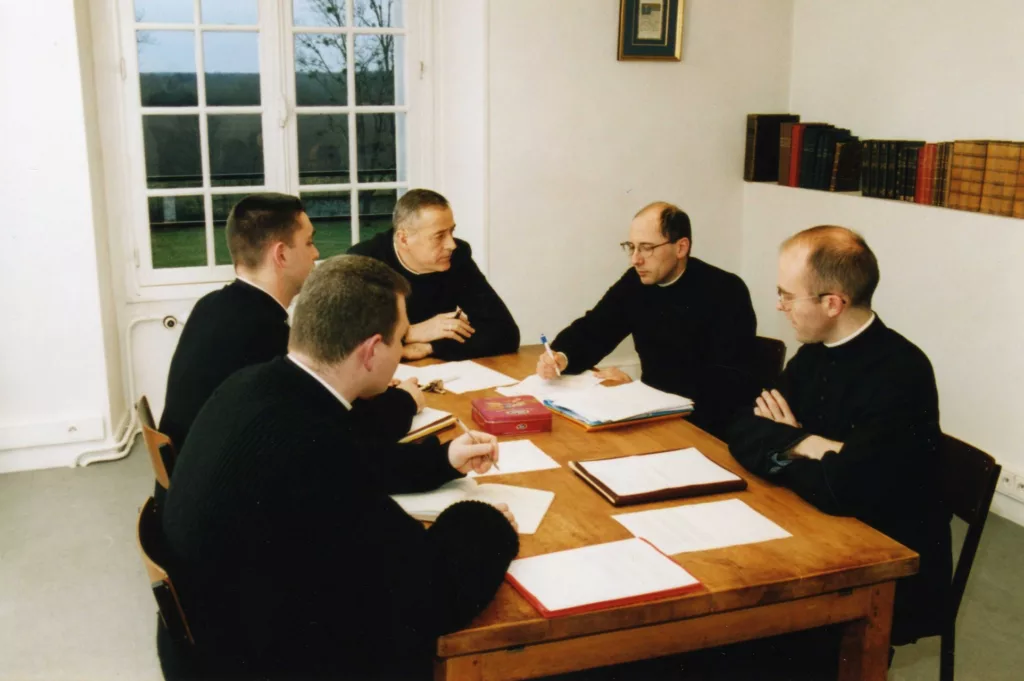
A new Moderator General was elected for six years, Don Paul Préaux, ordained priest in 1989. Re-elected in 2016 and 2022, he still holds the position of Moderator General, for a third and final term.
From the 2000s onwards, and especially since 2010, the life of the Community has been marked by numerical growth, an opening up to the international dimension and the diversification of its missions in parishes, shrines and educational works, particularly boarding schools.
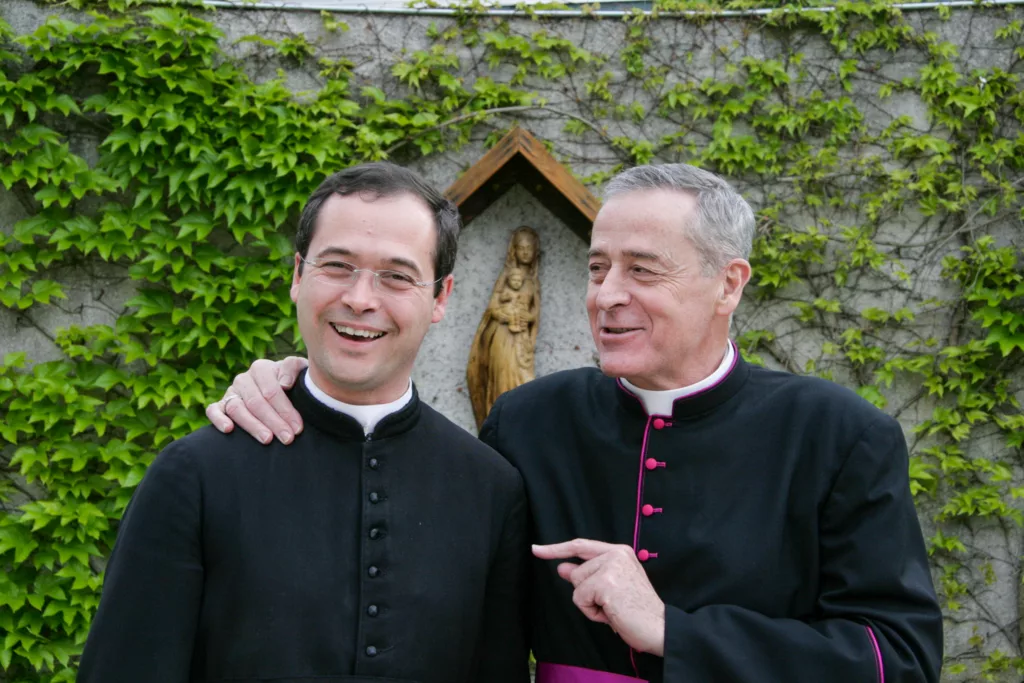
The premises in Candé-sur-Beuvron became too small for the seminarians, so a move was necessary. During the summer of the same year, the Mother House and the House of Formation moved to Évron (Mayenne), in the diocese of Laval.
For more than ten years, the House of Formation has been growing in the Benedictine abbey of Évron (17th century), where seminarians continue their human, spiritual, intellectual, pastoral and community formation.
This house is also home to the Mother House of the Community, which is being restructured to better respond to current challenges and the evolution of the Community. As a place of decision-making, it welcomes priests during times of community gathering, ongoing formation or rest.

Every year, in the wake of the feast of Saint Martin on 11 November, the Community strongly emphasises its associative dimension by bringing all its members together for the General Assembly, three days of Martinian meetings.
The Community is above all the sum of its members, priests and deacons, who are distributed throughout the Church and dioceses in parishes, shrines, boarding schools and other youth ministries. Present mainly in France, it has gradually taken on missions in Cuba, Germany, Rome and now Austria.